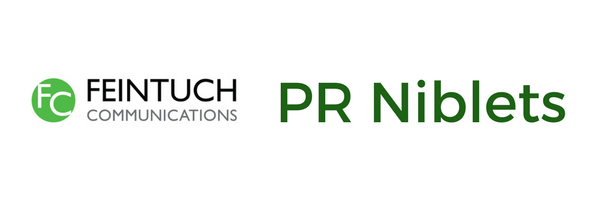 |
| Jay Carney, press secretary for President Barack Obama |
1. Creating Strategy v. Managing Crises – In B2B PR, there is much more of a strategic mindset. The team can create a short term or long term strategy and then try to adhere to it. Crises may arise, but the framework of an agreed upon plan is often largely kept in place.
In public affairs, there is often no long term plan at all. Rather than being proactive with strategy, the job is often reactive. Though there may be end goals (reelection, certain policies being passed, etc.), a press secretary will often be handling media inquiries or specific, sporadic projects that have a less defined timeline. Whereas in B2B PR we may lay out a strategically beneficial schedule of press releases, media interviews, and other helpful actions, in public affairs there is often no plan for these until the situation arises suddenly.
As a kicker, the situation may disappear just as quickly. A press conference could be scheduled as soon as a Senator decides to introduce a new bill, and then just a few hours before it would take place, the Senator may find an issue with the language of the bill and cancel the whole thing. A Congressional hearing may end up bringing a Representative into the spotlight, and suddenly there are requests for television interviews from MSNBC, CNN and Fox -- all for the next day. A gaffe could lead to the need to prepare a statement for all media that call looking for a comment. This is not to say that these situations never arise in a B2B setting, but rather that general PR has a strong emphasis on proactive strategy rather than being forced to constantly be handling unforeseen situations.
2. Meeting Different End Goals – In B2B PR, the strategy always consists of, at a basic level, helping the client as best as possible in order for that client to become a more successful company by achieving their business objectives.
The goals for a politician can often be more diverse. Two frequent goals that may even come in contention with each other are reelection and legislating. This might mean making a politician develop a strong media presence when dealing with certain issues that many constituents back - all in an effort to be reelected. At the same time, however, it could mean shying away from media exposure in an attempt to legislate something that may be unpopular to the constituents.
There is a constant balancing act between legislating and getting reelected, and between trying to get media exposure and trying to stay behind the scenes. Other possible goals include better committee assignments, or positioning for a more powerful position further down the road, just to name a few. In B2B PR, there is less contention. Though there are times that a client may not want a lot of exposure and other times when a client will want lots of it, the goal is always the success of the company within its market.
3. Being More Than, or Only, PR – One of the first things I learned at Feintuch Communications was that it is important not to just think of ourselves as a PR firm. We handle all sorts of tasks for our clients, from press relations to investor relations, to analyst relations, to complete marketing strategies. This is very different from my experience in Congress, in which a Press Secretary or Communications Director really just handles the media. There are no investor relations projects because there are no investors. There is no need for a big, intricate marketing strategy because as I alluded to earlier, it would all fall off the rails quite quickly. The job ends up consisting mostly of press and media relations, with social media sometimes thrown in depending on the level of the staffer and on the politician being represented. The nature of the job forces its simplicity and precision - there is no market share, there are no investors, there are no analysts, and as I mentioned earlier there is less of a proactive strategy. This all makes public affairs PR a much less comprehensive offering, at least in comparison to the PR discipline and orientation I have been experiencing while interning with Feintuch Communications.

